Unraveling the Mystery of Grocery Store Aisles: Your Ultimate Guide. Unlocking the Secrets of Your Grocery Store: A Comprehensive Guide. Master the Aisles: Your Essential Guide to Smarter Grocery Shopping
Welcome to our comprehensive guide, where we decode the organization of grocery store aisles for a more efficient shopping experience. In the vast world of grocery stores, aisles are the highways that guide you to your much-needed items, from the freshest fruits to your favorite snacks. But have you ever wondered why the bread is often near the back, or the produce is frequently by the entrance?
This guide aims to give you a deep understanding of the structure and organization of grocery stores, which can often seem labyrinthine in their complexity. It might seem trivial, but knowing your way around grocery store aisles can lead to significant time savings, allow you to find better deals, and even prevent unnecessary purchases.
Let’s make you a pro at navigating any grocery store aisle, regardless of the store’s size or layout. Not only will we delve into the joint structures and strategies behind the organization of corridors, but we’ll also provide tips and tricks to enhance your overall shopping experience.
Contents
A world of efficient and stress-free grocery shopping awaits you. Let’s get started!
Understanding Grocery Store Layouts
Like a well-planned city, grocery stores follow specific rules of organization and architecture to guide customers effortlessly through their shopping journey. Let’s explore these fundamental principles, the impact of store layouts on your shopping habits, and how modern technology is making navigation more straightforward.
Basic Principles Behind Grocery Store Layouts
Grocery stores are masterfully designed retail spaces. Their layout strategies aim to encourage shoppers to spend more time (and consequently, more money) inside the store. Here are some of the widely adopted principles: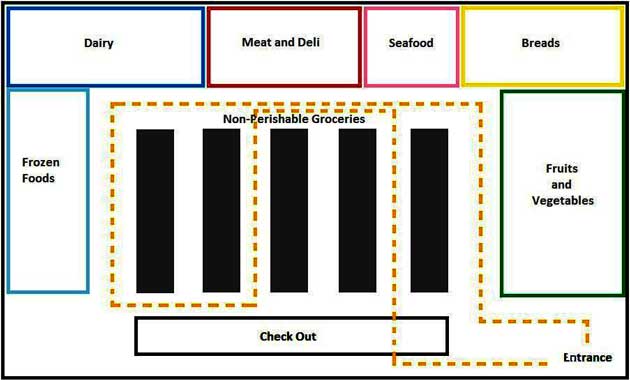
- Entrance – The store’s entrance usually opens to the fresh produce section. The vibrant colors of fruits and vegetables give an impression of freshness, indirectly suggesting that the entire store is filled with new items.
- Perimeter Layout – Essential items like dairy, bread, and meat are placed along the store’s periphery. It encourages shoppers to walk through the entire store, exposing them to a wide range of products.
- Impulse Purchases – High-margin and impulse items, like candy and magazines, are often found near the checkout counter.
- High-Low Placement – Products targeted at kids are often placed on lower shelves where they are easily visible to young eyes, while more expensive items are usually at eye level for adults.
Here’s a generalized overview of a typical grocery store layout:
| Aisle | Typical Products |
|---|---|
| Entrance | Fresh Produce |
| Perimeter | Dairy, Bread, Meat, Fresh Foods |
| Center Aisles | Canned Goods, Cereals, Baking Ingredients, Snacks |
| Checkout | Candy, Magazines, Small Impulse Purchase Items |
How Grocery Store Layouts Affect Shopping Habits
A grocery store’s layout significantly influences your shopping behavior. The more time you patiently spend in the store, the more likely you will make unplanned purchases. The location of essentials along the perimeter necessitates traversing through a labyrinth of tempting options before reaching your intended items.
The strategic positioning of items encourages impulse buying. An example is the soda and chips often located near each other, exploiting the common pairing in consumers’ minds. Similarly, placing candy and magazines near checkout counters capitalize on last-minute buying decisions while customers wait in line.
Using Grocery Store Maps and Apps for Easier Navigation
In today’s digital era, several grocery stores have made it even easier to navigate through aisles with the help of store maps and mobile apps. These apps often offer interactive store maps, making locating items easy and even creating efficient routes based on your shopping list. Popular apps include the Kroger app, which provides an aisle-by-aisle grocery list feature, and the Safeway app, known for its user-friendly layout.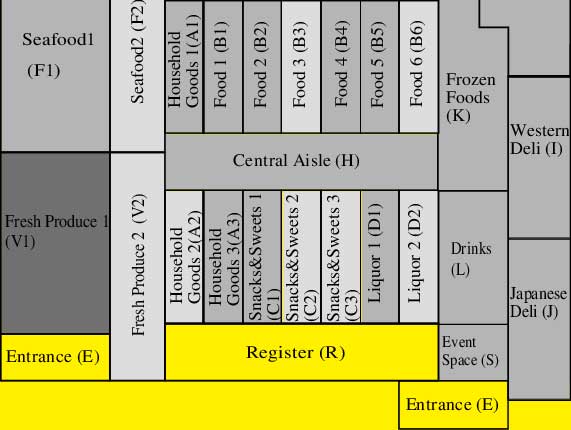
Store maps are also usually available at the customer service desk in most supermarkets. Feel free to ask for one if you’re in a new store or if the store has been recently rearranged. Remember, the quicker you can navigate, the more time and money you can save!
Importance of Aisle Organization
Let’s turn our attention to the backbone of every grocery store – the aisles. Aisles act as the veins of a grocery store, carrying customers through a wide variety of products. Understanding the organization of these aisles is pivotal to your shopping efficiency and experience. In this section, we’ll discuss aisles’ role in organizing a store, common aisle organization strategies, and the usage of aisle signs and markers.
Role of Aisles in Organizing a Grocery Store
Aisles in a grocery store act as dividing lines, carving out store sections into manageable, navigable zones. They create order amidst the plethora of goods, transforming what could be a chaotic jumble into a structured system. They guide shoppers’ movements, naturally leading them from one store section to another.
Aisles serve another crucial function: they provide space for product presentation. The product shelves lining each aisle are carefully arranged to maximize visibility, promote products, and influence buying decisions. Combining an efficient aisle layout and strategic product placement can significantly enhance customer experience and sales.
Typical Aisle Organization Strategies
Grocery stores meticulously design their aisle organization strategies for optimal impact. The products you see, their arrangement, and even their location within an aisle are rarely coincidental. Below are some of the common strategies:
- Categorization – Aisles are typically categorized based on the type of product they house. For instance, one aisle may be dedicated to canned goods, another to cereals and breakfast foods, and another to baking supplies.
- Product Placement – Within each aisle, product placement plays a crucial role in influencing purchases. High-demand products are often placed in the middle of aisles, drawing shoppers further in. Higher-priced items are usually at eye level, while lower-priced alternatives are placed on higher or lower shelves.
- End Caps – The ends of each aisle, known as ‘end caps,’ are prime retail spaces often used to showcase promotional items or new products.
Let’s look at a typical grocery aisle categorization:
| Aisle Number | Category |
|---|---|
| 1 | Bakery & Bread |
| 2 | Canned Goods & Soups |
| 3 | Condiments & Sauces |
| 4 | Pastas & Rice |
| 5 | Snacks & Cookies |
| 6 | Cereals & Breakfast Foods |
Understanding Aisle Signs and Markers
Aisle signs and markers are essential to aiding your store navigation. They are usually hung at the end of each aisle or sometimes in the middle, listing the main categories of products in that aisle.
For instance, an aisle sign might read: “Aisle 4: Pasta, Rice, International Foods.” Understanding these signs can help you locate your desired items faster, saving time and making your shopping trip more efficient.
Look out for digital aisle signs, too, as these often provide additional details like special offers or information about new products.
Understanding grocery store aisles can seem like a science, but armed with this knowledge, you’re on your way to mastering your shopping experience.
Exploring Common Aisles: Overview
Let’s now embark on a journey through the veins of our hypothetical grocery store – the aisles. Each aisle can be likened to a microcosm of products, each offering a distinct collection that appeals to different tastes and needs. This section will take a bird’s eye view of the most common aisles you’ll encounter during your shopping journey.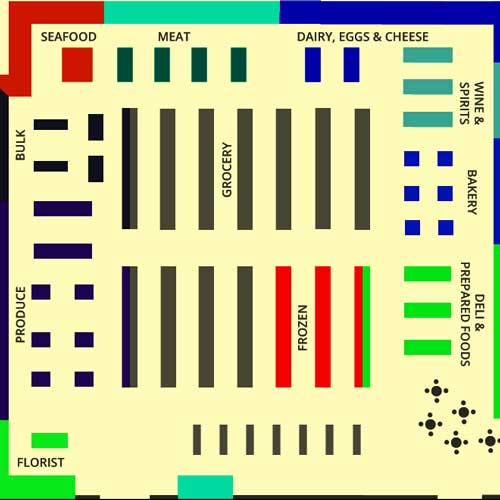
Brief Introduction to the Most Common Aisles in a Grocery Store
Every grocery store, regardless of size or location, maintains a set of staple aisles. You’ll visit these aisles more frequently due to the essential nature of the products they house. They usually contain items that form the basis of your shopping list: fresh produce, dairy products, meats, canned goods, and the like.
Additionally, other aisles cater to more specific needs and tastes, such as organic products, international cuisine, baby goods, and health and beauty products. These aisles offer a specialized selection and might only be on your usual route if you need what they offer.
Common Aisles and Their Usual Contents
Below is a quick reference table summarizing some common aisles you’re likely to encounter and the typical contents you’d find therein:
| Aisle | Typical Contents |
|---|---|
| Fresh Produce | Fruits, vegetables, herbs |
| Dairy & Refrigerated | Milk, cheese, yogurt, butter, eggs |
| Meat & Seafood | Beef, chicken, pork, fish, shellfish |
| Canned Goods & Soups | Canned vegetables, fruits, beans, soups |
| International Foods | Specialty items from various cuisines |
| Bakery & Bread | Bread, pastries, bagels, tortillas |
| Baby & Child Care | Baby food, diapers, baby care products |
| Health & Beauty | Personal care items, cosmetics, health supplements |
Knowing your way around these aisles will accelerate your shopping trips, making them quicker and more efficient.
Exploring Common Aisles: Detailed Analysis
In this part of our journey through the grocery store, we will examine several popular aisles in more detail. We will provide a list of items, famous brands, and handy tips for a superior shopping experience.
Baking Aisle
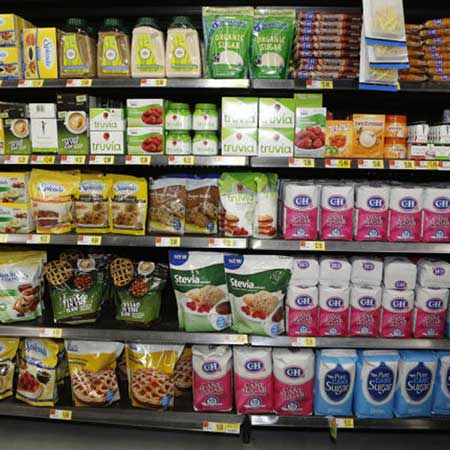 The baking aisle is like a treasure trove for the home baker. Here you can find all the essentials to whip up everything from a simple batch of cookies to a grand wedding cake.
The baking aisle is like a treasure trove for the home baker. Here you can find all the essentials to whip up everything from a simple batch of cookies to a grand wedding cake.
| Common Items | Popular Brands |
|---|---|
| Flour, sugar, baking powder, baking soda, yeast, cake mixes, chocolate chips, vanilla extract | Pillsbury, King Arthur, Bob’s Red Mill, Nestlé Toll House, McCormick |
When exploring the baking aisle, consider the baking you do most often. Invest in quality ingredients that align with your needs. Always check the expiration dates on yeast, baking powder, and baking soda, as these items can lose potency over time.
Beverage Aisle
 Next, we come to the beverage aisle, home to a wide range of refreshing drinks to quench your thirst.
Next, we come to the beverage aisle, home to a wide range of refreshing drinks to quench your thirst.
| Choices | Top Brands |
|---|---|
| Soda, juice, tea, coffee, energy drinks, bottled water, beer, wine | Pepsi, Coca-Cola, Lipton, Folgers, Red Bull, Evian, Budweiser, Barefoot |
When selecting beverages, consider both taste and health considerations. It’s always beneficial to balance indulgent and healthier options at home.
Bread and Cereal Aisle
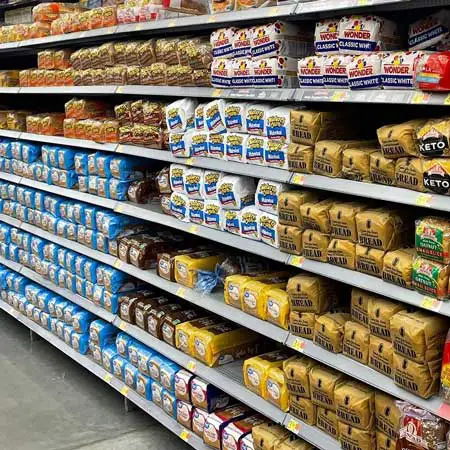 A visit to the bread and cereal aisle offers a variety of options for breakfast and sandwich making.
A visit to the bread and cereal aisle offers a variety of options for breakfast and sandwich making.
| Variety | Noteworthy Brands |
|---|---|
| Whole wheat bread, multigrain bread, white bread, bagels, cheerios, cornflakes, granola | Wonder Bread, Pepperidge Farm, Kellogg’s, General Mills, Quaker |
When shopping in this aisle, look for whole-grain options whenever possible. They are more nutritious and will keep you feeling full for longer.
Snack Aisle
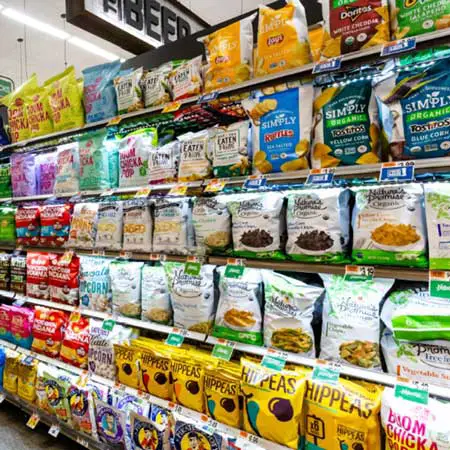 The snack aisle is your go-to spot for those midday hunger pangs or late-night munchies.
The snack aisle is your go-to spot for those midday hunger pangs or late-night munchies.
| Choices | Renowned Brands |
|---|---|
| Chips, pretzels, popcorn, cookies, candies, chocolate, granola bars | Lay’s, Rold Gold, Orville Redenbacher, Nabisco, Hershey’s, Nature Valley |
When it comes to snacking, moderation is key. While indulging your sweet tooth or salty cravings is OK, consider including healthier options in your snack repertoire.
Dairy Aisle
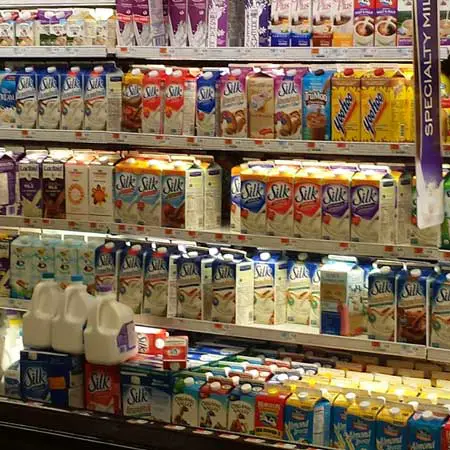 Finally, we’ll explore the dairy aisle, a source of high-quality proteins, vitamins, and minerals.
Finally, we’ll explore the dairy aisle, a source of high-quality proteins, vitamins, and minerals.
| Products | Top Brands |
|---|---|
| Milk, cheese, yogurt, butter, cream, eggs | Kraft, Dannon, Land O’Lakes, Organic Valley, Eggland’s Best |
When buying dairy products, freshness is vital. Check the sell-by dates, and remember that organic and locally sourced products can offer added health benefits. Always store dairy products at the right temperature to maintain their quality.
Through this detailed aisle-by-aisle analysis, we hope you can navigate your local grocery store with newfound confidence and ease, making your shopping experience more efficient and enjoyable.
Specialized Aisles and Their Offerings
Moving away from the standard aisles, let’s delve into the specialized corridors. These dedicated sections offer many choices, catering to specific culinary needs and preferences.
Frozen Food Aisle
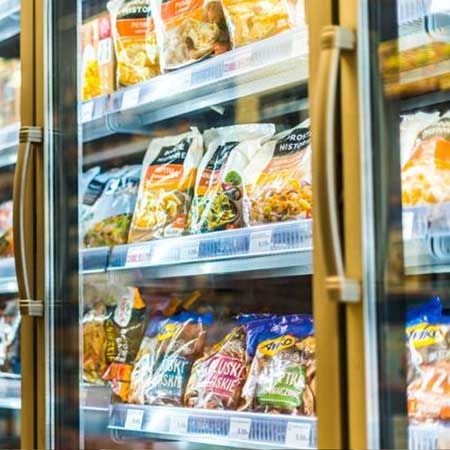 The frozen food aisle is a testament to convenience. Here, you will find a nice and wide variety of products that are easy to prepare and designed to retain freshness for longer periods.
The frozen food aisle is a testament to convenience. Here, you will find a nice and wide variety of products that are easy to prepare and designed to retain freshness for longer periods.
| Diversity of Products | Known Brands |
|---|---|
| Frozen vegetables, ready meals, pizza, ice cream, desserts, seafood | Birds Eye, Stouffer’s, DiGiorno, Ben & Jerry’s, SeaPak |
Preserving the quality of frozen foods is primarily about temperature control. Ensure that your loved freezer is set to the appropriate temperature (usually 0°F or -18°C) and minimize the time frozen food spends outside the freezer during transit and unpacking.
Ethnic/International Aisle
 The ethnic or international aisle is a passport to global flavors without leaving your local grocery store. Here, you’ll discover a range of products representing various world cuisines.
The ethnic or international aisle is a passport to global flavors without leaving your local grocery store. Here, you’ll discover a range of products representing various world cuisines.
| Product Types | Well-known Brands |
|---|---|
| Spices, sauces, noodles, rice varieties, canned goods, sweets, snacks | Goya, Blue Dragon, Patak’s, NongShim, Tilda |
Venturing into new culinary experiences can be as simple as trying a fresh sauce or spice from this aisle. Don’t be afraid to experiment and broaden your culinary horizons.
Organic/Healthy Foods Aisle
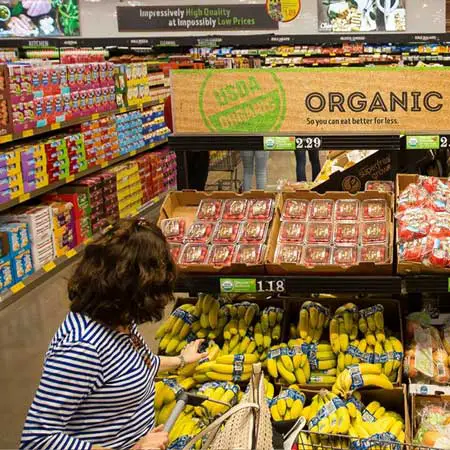 The organic or healthy foods aisle offers products made with fine natural ingredients and without artificial additives.
The organic or healthy foods aisle offers products made with fine natural ingredients and without artificial additives.
| Product Types | Trusted Brands |
|---|---|
| Organic fruits and vegetables, whole grain products, gluten-free items, natural sweeteners, plant-based alternatives | Whole Foods, Annie’s, Nature’s Path, Amy’s, Earth’s Best |
Shopping in this aisle is an easy way to incorporate healthier alternatives into your diet. Look for certified organic products to ensure that what you’re buying is genuinely organic, and always read labels carefully to understand what you’re consuming.
Each of these specialized aisles presents an opportunity to diversify your diet and explore new flavors. Your local grocery store has something to offer whether you’re seeking convenience, international cuisine, or healthier alternatives.
Making Shopping Easier: Tips and Tricks
Even with a thorough understanding of the different aisles and what they offer, grocery shopping can still take time and effort. Let’s explore how to make this necessary task more efficient and enjoyable.
Making Use of Grocery Store Apps and Digital Tools for Navigation
In today’s digital age, grocery store apps are a fantastic resource to help navigate the aisles. These applications often provide a store map, a list of products, and even special deals and discounts. Some grocery store apps also allow for online ordering and curbside pickup, adding another level of convenience.
| Popular Grocery Apps | Key Features |
|---|---|
| Walmart Grocery, Instacart, Target | Store map, product search, digital coupons, online ordering, pickup and delivery options |
Organizing Shopping Lists by Aisles
One of the simplest and absolutely beautiful ways to streamline your grocery shopping is to organize your shopping list by aisles. Doing so will not only surely help you remember what you will need there, but it will also guide your path through the store, reducing backtracking.
Consider using a note-taking or specialized grocery list app that categorizes items by aisle. It can save you considerable time and ensure you get everything on your list.
Efficient Routes Through a Grocery Store to Save Time
Planning an efficient route through the grocery store can be a significant time saver. It may be as simple as starting at one end and working alone on your way to the other, or it may involve a more detailed plan based on the store layout and your shopping list.
| Efficient Shopping Route | Benefits |
|---|---|
| Start from one end, moving aisle by aisle towards the other end | Reduces backtracking, ensures thorough coverage of all aisles |
Remember, perishable goods such as dairy and frozen items should be picked up last to ensure they remain fresh during your shopping trip.
Using digital tools, planning your shopping list, and plotting your store route are simple strategies to transform your grocery shopping from a chore into a more manageable task. These methods aim to maximize efficiency, minimize missed items, and ultimately make your shopping experience more enjoyable.
Conclusion
As we conclude our insightful journey through grocery store aisles, let’s briefly recap the significant points we’ve covered in this post:
- We’ve explored the fundamental anatomy of a grocery store, understanding its layout and the placement logic of different product categories.
- We’ve navigated through standard aisles such as baking, beverages, bread and cereal, snacks, and dairy, examining popular brands and various products available.
- We delved into specialized aisles, including frozen foods, ethnic/international foods, and organic/healthy foods, underscoring the rich diversity that today’s grocery stores offer.
- Finally, we shared some essential tips and tricks to simplify and expedite your shopping experience using digital tools, organizing your shopping list by aisles, and planning efficient routes.
We encourage you to apply this newfound knowledge in your future shopping experiences. See the grocery store not just as a place to pick up your necessities but also as an exciting exploration of tastes, brands, and culinary adventures waiting for you to discover.
References:
- Merchandising: Theory, Principles, and Practice by Grace I. Kunz
- Merchandising Mathematics for Retailing (Myfashionkit) by Cynthia Easterling

Ivelina Dimitrova is a seasoned journalist with extensive experience spanning various facets of the media industry. Over the years, she has worked in numerous newspapers and magazines, contributing thoughtful articles that reflect her deep understanding of various topics. Ivelina’s journalism career also extends to radio and regional television stations, where her articulate and compelling narratives have reached a broader audience. Her commitment to truth, accuracy, and storytelling has earned her a respectable place in the industry, and she continues to dedicate her craft to enlightening and engaging her readers and listeners.
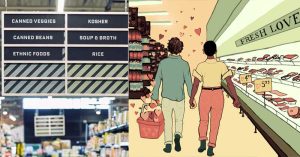
This is a great article, but I feel like the focus on processed food brands is a bit high. Don’t forget that many grocery stores also have a bulk section where you can get grains, cereals, nuts, and more with less packaging!
Good overview, but there’s a missed opportunity to discuss organic labeling. Understanding what “organic” means on a label can help consumers make informed decisions.